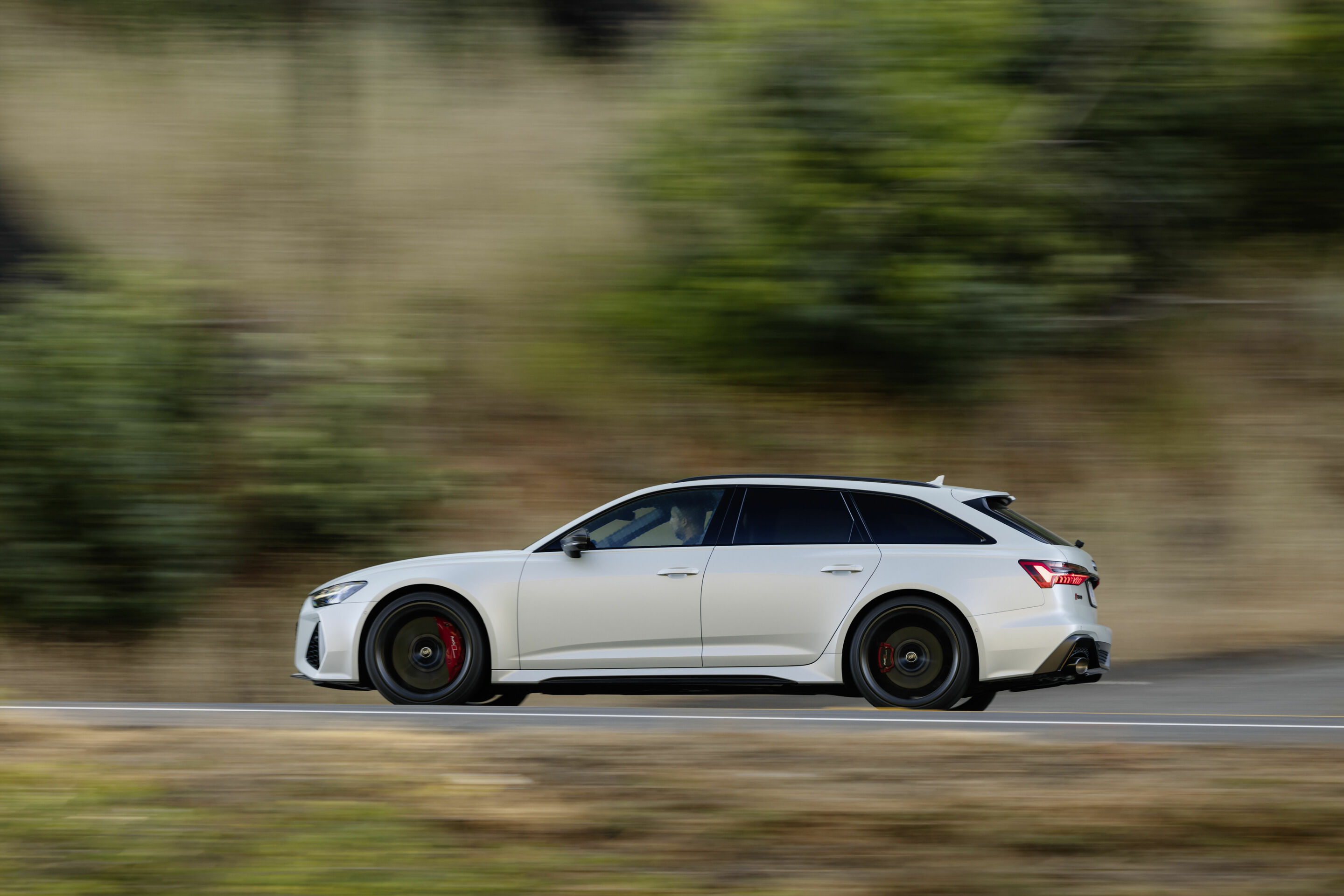The power produced by the 4.0 TFSI is delivered via the standard eight-speed tiptronic transmission with optimized gear changing to the quattro permanent all-wheel drive system. A purely mechanical center differential distributes the forces to the front axle and rear axle at a ratio of 40 : 60. In the event of slip, more drive torque automatically goes to the axle with the better traction. Up to 70 percent can be directed to the front wheels, or up to 85 percent to the rear wheels.
The agile and reliable handling of the RS 6 Avant and RS 6 Avant performance is optimized by the wheel-selective torque control, which applies slight braking pressure to the wheels on the inside of the curve before they slip. This guides the torque to the wheel on the opposite side. In the optional RS dynamic package and RS dynamic package plus, Audi combines wheel-selective torque control with the quattro sport differential. The software of the sport differential calculates the ideal distribution of torque at the rear axle in terms of the vehicle dynamics continuously and thereby increases vehicle dynamics, traction, and stability. The sport differential features a conventional rear differential on both sides supplemented by a superimposed stage. It comprises two sun gears and an internal gear and rotates roughly ten percent faster than the drive shaft.
A multi-plate clutch in an oil bath and operated by an electrohydraulic actuator provides the power connection between the shaft and the superposition gear. When the clutch closes, it steplessly forces the higher speed of the superposition stage on the gear. Being forced to turn faster results in the additional torque required being drawn off from the opposing wheel on the inside of the curve via the differential. In this way nearly all of the torque can be directed to one wheel. The sport differential can distribute the torque between the left and right rear wheels in all operating states, including overrun. When turning or accelerating in a curve, they are predominantly steered toward the wheel on the outside of the curve – the car is literally pressed into the curve, counteracting even any hint of understeer. In case of oversteer, the sport differential stabilizes the vehicle by shifting torque to the wheel on the inside of the curve.
In the RS 6 Avant and RS 6 Avant performance all suspension components are actuated via the electronic chassis platform. The electronic chassis platform (ECP), which is installed in many Audi models with a longitudinal engine, is the central control unit for the suspension. To do this, it takes into account the speed, yaw rate, lateral acceleration, roll and pitching movements of the vehicle, the steering angle, coefficient of friction of the road surface, the current driving conditions, such as understeer or oversteer, as well as the data from the suspension systems involved. Based on this data, it calculates the optimum adjustment of these components. The benefits for the customer include more precise cornering behavior, increased vehicle dynamics, and a high level of ride comfort. Networking with Audi drive select allows the driver to influence how the system works.
New self-locking center differential in the Audi RS 6 Avant performance
Power from the 4.0 TFSI engine flows through a standard eight-speed tiptronic with faster shifting times to the permanent all-wheel drive quattro. The strictly mechanical center differential distributes engine power to the rear axle at ratio of 40 : 60 and if slippage occurs, more drive torque is automatically applied to the axle with better traction – up to 70 percent can flow to the front axle and up to 85 percent to the rear axle. The self-locking center differential is lighter and more compact. It improves driving dynamics and offers noticeably more precise cornering which makes for less understeering at the handling limits.
As an added improvement, the self-steering response is more exact with passengers benefitting from a more agile driving experience overall.
All terms marked in the text are explained in detail in the technology lexicon at www.audi-mediacenter.com/en/technology-lexicon.
The specified equipment, data and prices relate to the model range on offer in Germany. Subject to changes and errors. Figures on the fuel consumption and the CO2-emissions (found from page 2 onwards) vary in case of given ranges depending on the used combination of wheels/tires.
